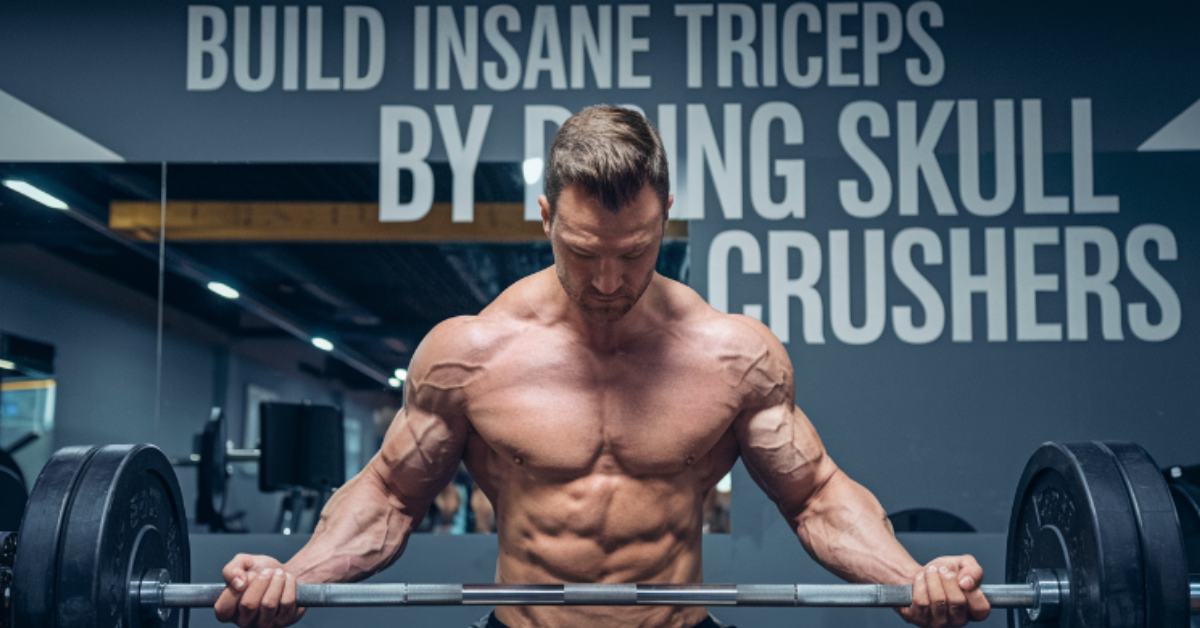HEALTH
Ward Off Panic Attacks: How Psychological Services in Penrith Can Help

Panic attacks are, no doubt, overwhelming and frightening experiences, leaving individuals feeling out of control and anxious. However, residents of Penrith have access to specialised psychological services that offer valuable support and strategies to help manage and overcome these challenging episodes.
Located in the heart of Penrith, these services cater to the community’s unique needs and are dedicated to promoting mental well-being among its residents. So, delve into how specialised Penrith psychological services can make a significant difference in warding off panic attacks and fostering a healthier state of mind for individuals in the area.
Understanding Triggers
The first step in effectively managing panic attacks is identifying and understanding triggers. Psychological services in Penrith provide a safe and confidential space for people to explore the underlying causes of their panic attacks. Clients can gain deeper insights into their triggers through therapy sessions and open discussions with experienced psychologists and counsellors.
Triggers can stem from various sources, such as past trauma, unresolved stressors, or specific situations that provoke anxiety. By understanding these triggers, individuals can recognise warning signs and gain a sense of control.
Developing Coping Strategies
With an understanding of their triggers, individuals can work collaboratively with psychologists to develop personalised coping strategies. These strategies may encompass a range of techniques, including deep breathing exercises, mindfulness practices, and cognitive-behavioral therapy (CBT) interventions.
Psychological services in Penrith offer a variety of therapeutic approaches tailored to meet each client’s unique needs and preferences. By learning and practising these coping strategies, individuals can effectively manage their panic attacks and gradually reduce their frequency and intensity over time.
Addressing Underlying Issues
Panic attacks can often be manifestations of deeper mental health concerns such as generalised anxiety disorder (GAD), post-traumatic stress disorder (PTSD), or social anxiety disorder. In Penrith, psychological services adopt a comprehensive approach to treatment, aiming not only to alleviate immediate symptoms but also to delve into the root causes of these issues. This holistic approach involves a combination of individual therapy sessions and group workshops designed to facilitate the exploration and processing of past experiences, the acquisition of healthy coping mechanisms, and the cultivation of resilience in the face of challenges.
Individual therapy sessions offer a safe and confidential space to delve into their personal experiences, emotions, and thought patterns. Therapists help clients identify and challenge negative beliefs, develop coping strategies, and build skills to manage stress and anxiety effectively. Addressing the underlying issues contributing to panic attacks can significantly improve individuals’ overall well-being and quality of life.
Building Emotional Resilience
Emotional resilience plays a crucial role in managing panic attacks and maintaining mental well-being. Psychological services in Penrith prioritise building resilience by equipping people with the tools and skills to navigate life’s challenges effectively. Therapy sessions may incorporate activities aimed at enhancing self-awareness, fostering self-compassion, and promoting adaptive thinking patterns. By strengthening emotional resilience, individuals can bounce back from setbacks more easily and reduce the impact of panic attacks on their daily lives.
Providing Ongoing Support
Overcoming panic attacks is a crucial journey that requires ongoing support and guidance. Psychological services in Penrith offer continued support to individuals throughout their recovery process. Whether through regular therapy sessions, participation in support groups, or access to online resources and helplines, clients can access a comprehensive support system dedicated to their well-being. This ongoing support ensures that individuals feel empowered and motivated to continue their journey toward recovery, knowing that assistance is readily available when needed.
Panic attacks can be debilitating, but they need not control your life. In Penrith psychological services help individuals learn to manage their panic attacks effectively, address underlying issues, and build emotional resilience for long-term well-being. If you or someone you know is struggling with panic attacks, reaching out to psychological services in Penrith could be the first step towards a brighter, calmer future.
HEALTH
Build insane triceps by doing skull crushers – laz – tymoff

Build Insane Triceps by Doing Skull Crushers – Laz – TYMoff: A Complete Guide
If you’re looking to build massive, defined triceps that turn heads, skull crushers are a must-have in your workout arsenal. Renowned fitness expert Laz-TYMoff has highlighted skull crushers as one of the most effective exercises to build insane triceps. This guide will walk you through the benefits, techniques, and variations of skull crushers, offering you a complete roadmap to achieve your best triceps yet. Let’s dive into how to build insane triceps by doing skull crushers – Laz – TYMoff style.
Why Focus on Triceps? The Key to a Balanced Upper Body
Before we dive into skull crushers, it’s essential to understand why strong triceps are critical for upper-body development. The triceps make up approximately two-thirds of the upper arm, providing size, shape, and strength to your arms. They play a fundamental role in pushing movements and are essential for balance and muscle symmetry.
Benefits of Building Insane Triceps with Skull Crushers
Strengthening your triceps doesn’t only benefit your appearance but also contributes to functional strength. Here’s why developing triceps is beneficial:
- Improved Strength: Strong triceps are critical for push exercises, improving your performance in bench presses, shoulder presses, and other upper body moves.
- Injury Prevention: Well-developed triceps support elbow health, reducing the risk of injury during workouts.
- Aesthetic Appeal: Building defined, robust triceps will give your arms a sculpted, powerful look that complements the rest of your physique.
The Ultimate Triceps Exercise for Serious Gains – Skull Crushers!
Skull crushers are a powerful isolation exercise that targets the triceps. By engaging this muscle group exclusively, you can maximize growth in ways that compound exercises can’t achieve as efficiently.
How SkullCrushers Build Insane Triceps – Laz – TYMoff Method
According to Laz-TYMoff, incorporating skull crushers into your training routine allows you to build insane triceps by focusing on the medial and long heads of the muscle. This focus leads to full triceps engagement, resulting in muscular definition and mass gains.
How to Set Up for Skull Crushers?
The setup is essential for the correct execution of skull crushers. Here’s a step-by-step guide:
- Choose Your Equipment: You can perform skull crushers with a barbell, EZ-bar, or dumbbells. The EZ-bar is commonly used as it minimizes wrist strain.
- Position on the Bench: Lie on a flat or incline bench with your back fully supported.
- Grip the Bar: Hold the bar shoulder-width apart, with arms fully extended above your head.
Mastering Skull Crushers Technique for Maximum Triceps Activation
Executing skull crushers with proper form is essential to ensure full triceps activation and avoid injury. Here’s a guide to perfecting your technique:
- Start with the Right Weight: Begin with a moderate weight that allows you to maintain form for 8-12 reps. Progress to heavier loads gradually.
- Lower the Weight Toward Your Forehead: Bend your elbows and slowly lower the bar toward your forehead, keeping elbows stable and close to your body. The movement should be controlled, avoiding any swinging or momentum.
- Drive the Weight Up: Extend your arms to press the weight back to the starting position, squeezing your triceps at the top of the movement.
Tips for Proper Skull Crushers Form
- Keep Your Elbows Stable: Prevent elbow flaring, as this reduces triceps activation and can strain the shoulders.
- Focus on a Slow Tempo: Lower the weight slowly to increase time under tension, maximizing muscle engagement.
- Maintain the Mind-Muscle Connection: Visualize the triceps working with each rep to enhance engagement.
Progression Strategies: Build Insane Triceps by Doing Skull Crushers – Laz – TYMoff’s Way
To continue building insane triceps, progression is key. Here are strategies to make skull crushers even more challenging:
- Increase Weight Gradually: Start light and increase resistance as you get stronger, allowing for safe, steady growth.
- Use Drop Sets: After reaching muscle failure on a set, immediately reduce the weight and continue for additional reps. This technique adds intensity and drives muscle growth.
- Incorporate Rest-Pause Sets: Perform a set to near-failure, take a 10-15 second rest, then complete a few more reps. This helps push your triceps to the limit for maximal gains.
Understanding the Mechanics – Targeting the Triceps with Precision
The triceps are composed of three heads: the medial, long, and lateral heads. Skull crushers emphasize the medial and long heads, creating well-rounded muscle development.
Breakdown of Triceps Engagement
- Medial Head: Vital for arm stability, the medial head benefits from high-rep, controlled movements.
- Long Head: The largest portion of the triceps, targeted extensively by skull crushers, especially during the overhead movement.
- Lateral Head: While skull crushers don’t directly target the lateral head, adding variety (like pushdowns) in your routine will ensure balanced triceps growth.
Skull Crusher Variations to Keep Your Workout Fresh
Adding variety keeps your workouts exciting and targets the triceps from different angles. Here are some effective skull crusher variations:
- Dumbbell Skull Crushers: Using dumbbells instead of a barbell enhances range of motion and balances each arm’s strength.
- Incline Skull Crushers: Perform this variation on an incline bench to emphasize the long head, adding size to the rear of your triceps.
- Decline Skull Crushers: Decline bench skull crushers shift the emphasis toward the medial head for balanced growth.
- Cable Skull Crushers: Using a cable machine provides constant tension throughout the movement, increasing time under tension.
Prevent Common Mistakes for Effective Triceps Building
Even experienced lifters can fall into these common pitfalls, reducing the effectiveness of skull crushers:
- Using Excessive Weight: Prioritize form over weight to avoid injury and fully engage the triceps.
- Flared Elbows: Keep elbows close to your head; flaring them outward engages the chest and shoulders rather than isolating the triceps.
- Skipping Full Range of Motion: Lower the weight fully and press it back to the start for complete triceps engagement.
Integrating Skull Crushers into a Balanced Arm Workout
While skull crushers are effective, including other triceps exercises ensures balanced development. Consider adding triceps pushdowns, dips, and close-grip bench presses to your routine. Combining these with skull crushers will round out your triceps program, creating an aesthetic, balanced look.
Sample Triceps Workout Routine
- Skull Crushers: 3 sets of 8-12 reps
- Triceps Pushdowns: 3 sets of 10-15 reps
- Dips: 3 sets of 8-12 reps
- Close-Grip Bench Press: 3 sets of 8-10 reps
Optimize Recovery and Nutrition for Insane Triceps Gains
Training is only part of the equation; recovery and nutrition play equally important roles in building triceps.
- Prioritize Protein Intake: Aim for 1.6 to 2.2 grams of protein per kilogram of body weight to support muscle recovery and growth.
- Hydrate and Rest: Muscles grow during recovery, so get enough water and sleep (7-9 hours) each night for optimal results.
- Eat Carbs for Energy: Carbohydrates fuel workouts and replenish glycogen stores, ensuring you’re ready for your next session.
Read Also: openhouseperth.net lawyer
FAQs: Build Insane Triceps by Doing Skull Crushers – Laz – TYMoff
1. How does “Build Insane Triceps by Doing Skull Crushers – Laz – TYMoff” benefit my arm routine?
This approach focuses on maximizing triceps isolation and muscle activation, essential for achieving sculpted and strong arms.
2. How often should I do skull crushers for optimal growth?
Incorporating skull crushers two to three times a week with adequate rest in between is effective for most people aiming for growth.
3. Can skull crushers cause elbow pain, and how can I prevent it?
If performed with excessive weight or improper form, skull crushers may strain the elbows. Start with light weights, focus on technique, and progress slowly to avoid elbow discomfort.
4. Are there alternative exercises for building triceps if skull crushers are uncomfortable?
Yes, try triceps pushdowns, close-grip bench presses, or overhead triceps extensions as alternatives to skull crushers.
5. Should I use a barbell, EZ-bar, or dumbbells for skull crushers?
All three work well; however, an EZ-bar or dumbbells may reduce wrist strain for some individuals.
6. How many sets and reps should I aim for with skull crushers?
Typically, 3-4 sets of 8-12 reps are effective for muscle growth. Adjust as needed based on your training goals.
7. Do skull crushers help with other lifts, like bench pressing?
Yes, strengthening your triceps with skull crushers can contribute to better bench press performance since the triceps assist in the lift.
8. What’s the best way to incorporate progression in skull crushers?
Increase the weight gradually, use drop sets, or adjust tempo to continually challenge your triceps for growth.
9. Can I perform skull crushers on an incline or decline bench?
Absolutely! Incline and decline variations adjust the angle and add variety, targeting different parts of the triceps.
10. What should I focus on for balanced arm development?
Pair skull crushers with exercises like triceps pushdowns, dips, and close-grip presses to achieve well-rounded triceps.
HEALTH
FAQs About OBGYNs

An OBGYN, or obstetrics and gynecology doctor, is a healthcare provider who specializes in women’s reproductive health. These professionals focus on various aspects of your well-being, including birth control, family planning, and pregnancy. Such doctors also provide postnatal care and assist you through menopause. Here are some FAQs about obstetrics and gynecology doctors:
What Do Obstetrics and Gynecology Doctors Do?
Obstetrics and gynecology are two broad branches of women’s healthcare. Gynecology focuses on your sexual and reproductive health from early teenage years through later stages of your life. Obstetrics deals with women’s healthcare before, during, and after pregnancy and covers prenatal care, vaginal and cesarean births, and postnatal care. An OBGYN can help you address various sexual, reproductive, and women’s healthcare issues. Such professionals offer preventative care, diagnose medical conditions, and develop individualized treatment plans. They also perform surgeries and prescribe non-invasive and minimally invasive treatments.
What Conditions Do OBGYNs Address?
You can visit an obstetrics and gynecology doctor for adolescent care, routine ultrasounds, and Pap smear screens. The doctors are also part of your primary healthcare team through and beyond menopause, providing education and symptom management. OBGYNs address various issues, including abnormal uterine bleeding, endometrial ablation, and hormone replacement therapy after menopause. You can consult your doctor in case of STDs and UTIs, vaginal discharge and dryness, fertility, and post-menopause sexual health issues. They also monitor your health and that of your baby throughout pregnancy and after delivery.
When Do OBGYNs See Patients?
Visits to your obstetrics and gynecology doctor are required to address sexual and reproductive health issues. According to the American College of Obstetrics and Gynecology, your first visit should be between 13 and 15. This is the age when you enter puberty or become reproductive and sexually active. First visits and annual follow-up appointments involve routine checks and consultations. You can visit the doctor at any moment during or after your reproductive years, especially if you’re having intercourse. Such visits help catch problems early and provide education about pregnancy and topics like birth control and family planning. You can also visit when experiencing irregular periods, unusual discharge, bleeding, pain, and other symptoms.
What Happens During a Visit With an OBGYN?
Each visit to your obstetrics and gynecology doctor is unique and involves a medical review and various tests. If you’re visiting for the first time, expect a general health exam, a possible pelvic exam, and a Pap smear. Pap smears are screening tests for cervical cancer and help to detect abnormal cells in your cervix before they develop into cancer. The first visit may also include discussions about menstrual health, STDs, and personal concerns. If you’re visiting during pregnancy, expect prenatal care questions about your diet, lifestyle, and the baby’s movements. Some visits may involve discussing infertility and surgery to remove fibroids and ovarian cysts.
Speak to an Experienced OBGYN Today
Obstetrics and gynecology doctors address questions, concerns, symptoms, and underlying issues that affect your sexual and reproductive health. You can visit your doctor several times throughout your life to maintain your overall health and well-being. Speak to an OBGYN today to find out more about their services.
HEALTH
4 Questions To Ask Your Doctor About Varicose Veins

Varicose veins develop when blood collects in a weak part of the veins, causing them to swell against the skin. If you’re concerned about this issue, you can discuss possible causes and treatment options with a cardiovascular specialist. Here are four questions to ask your doctor about this health condition:
What Causes Varicose Veins?
Your veins contain small valves that allow blood to flow easily in the right direction. If these valves become weak or damaged, blood can begin collecting in the veins, making them stretch, twist, and become enlarged. Sitting or standing for extended periods prevents blood from moving efficiently through the veins in your legs, which increases pressure and forms varicose veins. Through genetics, you may inherit weak vein walls and valves that make it easy for blood to pool. Injuries to the legs, such as a previous blood clot or physical trauma, can also damage veins and their valves, preventing blood from circulating. Asking your doctor about the causes of varicose veins may help you manage or minimize your risk of developing this health condition.
What Symptoms Should I Watch For?
During a doctor’s visit, ask which varicose vein symptoms you should monitor to determine if you need treatment. A primary symptom of this condition is swollen, rope-like veins that appear purple or blue. Some people with varicose veins experience throbbing and swelling in their legs, leading to a tight, heavy feeling. Other individuals experience leg soreness and muscle cramps, especially behind the knees. This feeling may be more apparent after physical activity. If your legs feel extremely weak and tired after standing or walking, see a doctor for diagnosis and treatment.
What Are the Available Treatment Options?
Depending on your symptoms, a specialist may suggest remedies such as elevating your legs to reduce strain on your veins. Exercising more frequently can also help the blood circulate freely in your legs. Your doctor can use sclerotherapy, which entails injecting a solution directly into the affected veins, helping them to close off. Another treatment option used is radiofrequency ablation. This minimally invasive procedure involves using energy to heat and collapse large veins.
What Happens if I Don’t Treat This Health Issue?
If left untreated, you may experience increasing swelling and pain in your legs and ankles, especially when standing or sitting. This discomfort can make it more challenging to continue with daily activities. Chronic irritation may cause itching in your legs. Poor circulation and pooling of blood can also lead to discoloration of the skin over the affected veins. To prevent these symptoms from affecting your life and causing further discomfort, seek treatment promptly.
Treat Varicose Veins Today
If you have varicose veins, a specialist can conduct a physical examination to determine their severity. Some doctors may also recommend an ultrasound to check for complications such as blood clots. They can offer suitable treatment options, including lifestyle changes and other methods that collapse enlarged veins. To learn more about this health condition and how to treat it, call a trusted cardiovascular clinic today.
-

 HEALTH11 months ago
HEALTH11 months agoHealthSciencesForum.com
-

 Tech1 year ago
Tech1 year agoRTG Sportsbook: A Comprehensive Guide to a Superior Betting Experience
-

 Blog1 year ago
Blog1 year agoExploring Kazwire: Your Gateway to Unblocked Gaming and Web Browsing
-

 Blog2 years ago
Blog2 years agoViolet Myers Passed Away: A Comprehensive Exploration
-

 Blog1 year ago
Blog1 year agoWhat To Look for When Buying THCa Flower Online
-

 Blog2 years ago
Blog2 years agoIs haband going out of business? Separating Rumor from Reality
-

 Tech1 year ago
Tech1 year agoUnlocking the Secrets of ahr0chm6ly9wcm9ka2v5cy5uzxqvexv6ds1wcm9klwtlexmv – A Comprehensive Guide
-
Blog2 years ago
manhwa18cc
